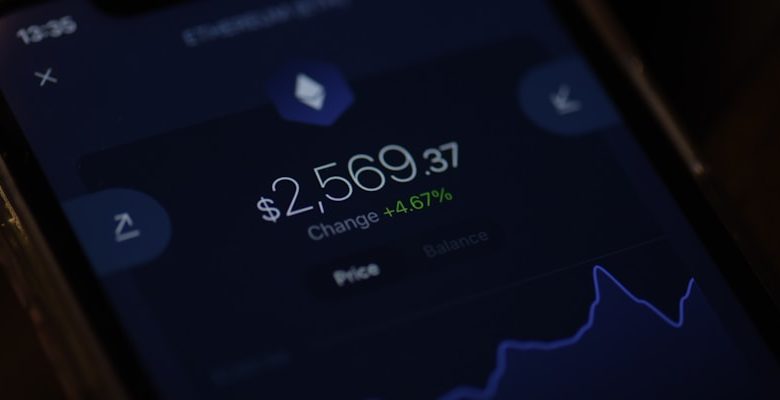How to Use Technical Analysis in Crypto Trading

- Understanding the Basics of Technical Analysis
- Common Technical Indicators Used in Crypto Trading
- Analyzing Price Charts for Crypto Trading
- Identifying Trends and Patterns in Cryptocurrency Markets
- Using Support and Resistance Levels in Technical Analysis
- Implementing Technical Analysis Strategies in Crypto Trading
Understanding the Basics of Technical Analysis
When it comes to crypto trading, technical analysis is a key tool that traders use to make informed decisions. Understanding the basics of technical analysis is crucial for anyone looking to navigate the volatile world of cryptocurrency markets.
Technical analysis involves studying past market data, primarily price and volume, to forecast future price movements. By analyzing charts and patterns, traders aim to identify trends and patterns that can help them predict where the price of a particular cryptocurrency may be headed.
One of the fundamental principles of technical analysis is the idea that price movements are not random but rather follow a pattern. This is based on the efficient market hypothesis, which suggests that all relevant information is already reflected in an asset’s price.
Some common tools used in technical analysis include moving averages, support and resistance levels, and various technical indicators like the Relative Strength Index (RSI) or Moving Average Convergence Divergence (MACD). These tools can help traders identify potential entry and exit points for their trades.
Common Technical Indicators Used in Crypto Trading
There are several common technical indicators used in crypto trading that can help traders make informed decisions. These indicators are based on mathematical calculations and historical price data, allowing traders to analyze trends and predict potential price movements. Some of the most widely used technical indicators in crypto trading include:
- Relative Strength Index (RSI): This indicator measures the speed and change of price movements. It helps traders identify overbought or oversold conditions in the market, indicating potential trend reversals.
- Moving Averages: Moving averages smooth out price data to create a single flowing line, making it easier to identify trends. Traders often use the crossover of short-term and long-term moving averages to signal buy or sell opportunities.
- Bollinger Bands: Bollinger Bands consist of a simple moving average and two standard deviations above and below the average. They help traders identify volatility and potential price breakouts.
- MACD (Moving Average Convergence Divergence): MACD is a trend-following momentum indicator that shows the relationship between two moving averages of an asset’s price. Traders use it to identify changes in momentum and potential trend reversals.
- Fibonacci Retracement: Fibonacci retracement levels are horizontal lines that indicate potential support and resistance levels based on the Fibonacci sequence. Traders use these levels to predict potential price corrections.
By using these technical indicators in combination with other analysis tools, traders can gain a better understanding of market trends and make more informed trading decisions in the volatile world of cryptocurrency trading.
Analyzing Price Charts for Crypto Trading
When analyzing price charts for crypto trading, it is essential to utilize technical analysis techniques to make informed decisions. One common method is to look at various indicators and patterns that can help predict future price movements. Some key indicators to consider include moving averages, relative strength index (RSI), and MACD (Moving Average Convergence Divergence).
Moving averages can give traders a better idea of the overall trend by smoothing out price fluctuations over a specific period. The RSI is a momentum oscillator that measures the speed and change of price movements, indicating whether a particular cryptocurrency is overbought or oversold. On the other hand, the MACD helps identify changes in a trend’s strength, direction, momentum, and duration.
In addition to indicators, traders can also analyze chart patterns such as head and shoulders, double tops, triangles, and flags. These patterns can provide valuable insights into potential price movements based on historical price data. By recognizing these patterns early on, traders can make more informed decisions about when to enter or exit a trade.
Overall, incorporating technical analysis into crypto trading can help traders gain a better understanding of market trends and make more strategic decisions. By leveraging indicators and chart patterns, traders can improve their chances of success in the volatile and fast-paced world of cryptocurrency trading.
Identifying Trends and Patterns in Cryptocurrency Markets
One way to analyze cryptocurrency markets is by identifying trends and patterns. By looking at historical price data, traders can spot recurring patterns that may indicate future price movements. This can help them make more informed trading decisions based on the direction of the market.
One common trend that traders look for is the formation of higher highs and higher lows in a price chart. This pattern, known as an uptrend, suggests that the price of the cryptocurrency is likely to continue rising. On the other hand, a series of lower highs and lower lows, called a downtrend, indicates that the price is likely to fall.
Another important pattern to watch for is the formation of support and resistance levels. Support levels are price points where a cryptocurrency has consistently bounced back up from, while resistance levels are price points where it has struggled to break through. These levels can help traders identify potential entry and exit points for their trades.
In addition to trends and patterns, traders can also use technical indicators to analyze cryptocurrency markets. These indicators, such as moving averages and relative strength index (RSI), can provide valuable insights into the strength and momentum of a trend. By combining technical analysis with other forms of market analysis, traders can make more accurate predictions about the future direction of cryptocurrency prices.
Using Support and Resistance Levels in Technical Analysis
Support and resistance levels are crucial concepts in technical analysis when trading cryptocurrencies. These levels represent points on a chart where the price tends to find barriers as it moves up or down. By identifying these key levels, traders can make more informed decisions about when to enter or exit trades.
Support levels act as a floor for the price, preventing it from falling further. Traders often look to buy at or near support levels, anticipating a bounce back up in price. On the other hand, resistance levels act as a ceiling, preventing the price from rising higher. Traders may look to sell at or near resistance levels, expecting the price to reverse direction.
When using support and resistance levels in technical analysis, traders can look for patterns such as double tops, double bottoms, head and shoulders, and triangles. These patterns can provide additional confirmation of potential price movements based on the interaction of price with support and resistance levels.
Implementing Technical Analysis Strategies in Crypto Trading
Implementing technical analysis strategies in crypto trading can greatly enhance your ability to make informed decisions and maximize profits. By utilizing various technical indicators and chart patterns, traders can analyze historical price data to identify trends and potential entry and exit points.
One popular technical analysis strategy is the use of moving averages, which help smooth out price fluctuations and identify trend direction. Traders can also use oscillators like the Relative Strength Index (RSI) or the Moving Average Convergence Divergence (MACD) to determine overbought or oversold conditions.
Another key aspect of technical analysis is the use of support and resistance levels. These levels represent areas where the price has historically struggled to move beyond (resistance) or has found support (support). By identifying these levels, traders can make more informed decisions about when to enter or exit a trade.
It is important to note that technical analysis is not foolproof and should be used in conjunction with other forms of analysis, such as fundamental analysis. By combining different analytical approaches, traders can make more well-rounded decisions and reduce the risk of large losses.



